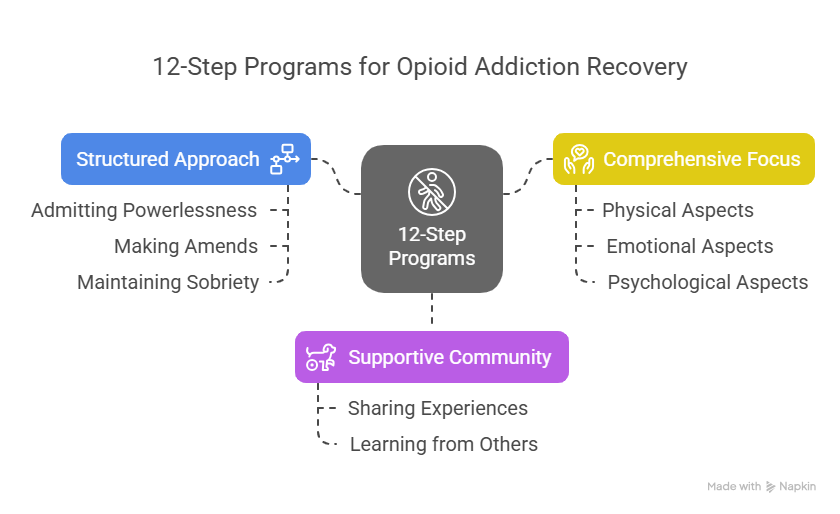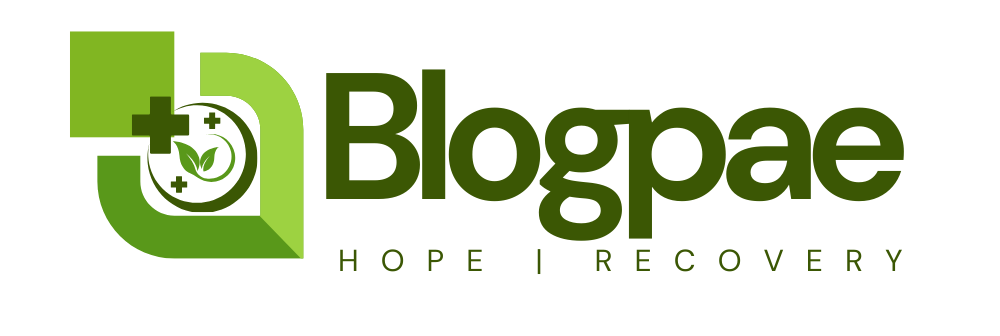Recovering from fentanyl addiction is a challenging journey, but with the right support and guidance, it is possible to overcome. The 12-step recovery program has been a beacon of hope for many individuals struggling with addiction.
The 12-step approach provides a structured path towards sobriety, emphasizing the importance of community, self-reflection, and personal growth. By working through the 12 steps, individuals can gain a deeper understanding of their addiction and develop the tools needed to maintain long-term recovery.
Key Takeaways
- Understanding the role of the 12-step program in fentanyl addiction recovery
- Recognizing the importance of community support in the recovery process
- Identifying the key principles of the 12-step approach
- Learning how to apply the 12-step principles in daily life
- Discovering the benefits of long-term recovery through the 12-step program
Understanding Fentanyl Addiction and Its Dangers
Understanding the complexities of fentanyl addiction is crucial for developing effective recovery strategies. Fentanyl, a synthetic opioid, is significantly more potent than heroin and morphine, making it highly addictive. The risks associated with fentanyl use are substantial, and its impact on individuals and communities can be devastating.
What Makes Fentanyl Addiction So Powerful
Fentanyl’s potency is a primary factor in its addictive nature. It works by binding to the body’s opioid receptors, producing feelings of euphoria and relaxation. However, this can quickly lead to dependence, as the body adapts to the constant presence of the drug.
Recognizing the Signs of Fentanyl Abuse
Recognizing the signs of fentanyl abuse is critical for early intervention. Common indicators include increased tolerance, withdrawal symptoms when not using, and neglect of responsibilities. The table below outlines some key signs and symptoms associated with fentanyl abuse.
| Signs of Fentanyl Abuse | Description |
|---|---|
| Increased Tolerance | Needing more of the drug to achieve the same effect |
| Withdrawal Symptoms | Experiencing physical and emotional distress when not using |
| Neglecting Responsibilities | Ignoring work, school, or personal obligations due to drug use |
The Risk of Fentanyl Overdose and Why Recovery Matters
Fentanyl overdose is a critical issue that demands immediate attention and action. The opioid crisis has escalated with fentanyl being a major contributor to overdose deaths. Effective recovery programs are crucial in combating this issue.
The journey to recovery begins with understanding the risks associated with fentanyl. Recognizing the signs of overdose is the first step towards saving lives.
Warning Signs of Overdose
Identifying the warning signs of a fentanyl overdose is crucial. These signs include difficulty breathing, drowsiness, and confusion. Acting quickly can save a life.
- Slow or stopped breathing
- Blue or purple lips and fingernails
- Unresponsiveness or inability to wake up
From Crisis to Recovery
Transitioning from a crisis situation to recovery involves several key steps. Seeking medical help immediately is crucial. Following this, engaging in a comprehensive recovery program can significantly improve the chances of a successful recovery.
The Power of Fentanyl and 12 Steps Recovery Programs
The 12-step program has been a beacon of hope for many struggling with opioid addiction, including fentanyl. These programs offer a structured path towards recovery, providing support and guidance throughout the journey.
The effectiveness of 12-step programs in addressing opioid addiction can be attributed to their comprehensive approach. They not only focus on the physical aspects of addiction but also on the emotional and psychological aspects.
How 12-Step Programs Address Opioid Addiction
12-step programs are designed to help individuals understand and overcome their addiction. They provide a supportive community where members can share their experiences and learn from others who are going through similar struggles.
The programs follow a structured approach, guiding members through the 12 steps, which include admitting powerlessness over addiction, making amends, and maintaining sobriety.

Success Rates and Benefits
Studies have shown that 12-step programs can be highly effective in helping individuals recover from opioid addiction. The success rates vary, but the overall benefits include improved mental and physical health, better relationships, and a reduced risk of relapse.
| Program Aspect | Benefits |
|---|---|
| Community Support | Provides a sense of belonging and understanding |
| Structured Approach | Guides members through recovery |
| Emotional and Psychological Support | Helps members cope with underlying issues |
Breaking Down the 12 Steps for Fentanyl Recovery
Fentanyl addiction can be overwhelming, but breaking down the 12 steps of recovery can make the process more manageable. The 12-step program is a well-structured approach that guides individuals through the recovery journey, from acknowledging their addiction to maintaining long-term sobriety.
Steps 1-3: Surrender and Acceptance
The initial steps involve surrendering to the reality of addiction and accepting the need for help. Step 1 is about admitting powerlessness over fentanyl, Step 2 involves believing in a higher power that can restore sanity, and Step 3 is about making a decision to turn one’s will and life over to this higher power.
Steps 4-7: Self-Examination and Change
Steps 4 through 7 focus on self-examination and personal growth. This involves making a moral inventory (Step 4), admitting the nature of one’s wrongs to oneself and others (Step 5), being ready to let go of these shortcomings (Step 6), and asking for these defects to be removed (Step 7).
Steps 8-9: Making Amends
Steps 8 and 9 are about making amends for past wrongs. This includes making a list of people harmed and becoming willing to make amends (Step 8) and actually making direct amends where possible (Step 9).
Steps 10-12: Maintenance and Growth
The final steps focus on maintenance and growth. This involves continuing personal inventory and admitting when wrong (Step 10), seeking spiritual growth through prayer and meditation (Step 11), and carrying the message of recovery to others (Step 12).
| Step | Description | Key Action |
|---|---|---|
| 1-3 | Surrender and Acceptance | Admitting powerlessness, believing in a higher power |
| 4-7 | Self-Examination and Change | Making a moral inventory, admitting wrongs |
| 8-9 | Making Amends | Making a list, making direct amends |
| 10-12 | Maintenance and Growth | Continuing inventory, seeking spiritual growth |
Getting Started with a 12-Step Program
A 12-step program can be a lifeline for those struggling with fentanyl addiction, providing a supportive community and a clear plan for recovery. The journey begins with understanding how to navigate the resources available.
Finding Meetings and Resources
To start, individuals can search online for local Narcotics Anonymous (NA) or other 12-step meetings. Many organizations offer meetings in person and online, making it easier to find support. Resources include meeting lists, literature, and sponsorship opportunities.
| Resource Type | Description | Benefits |
|---|---|---|
| Local Meetings | In-person gatherings for support and sharing | Face-to-face interaction, community building |
| Online Meetings | Virtual gatherings for support and sharing | Accessibility, flexibility, anonymity |
| Literature and Guides | Books, pamphlets, and online resources for guidance | Educational, structured program guidance |
What to Expect in Your First Meetings
In initial meetings, individuals can expect to listen to others’ stories, share their own experiences if they feel comfortable, and begin to understand the 12-step process. It’s a safe space to ask questions and receive support. Meetings vary, but they typically involve sharing and discussion, guided by the 12-step principles.
Overcoming Common Challenges in Fentanyl Recovery
Recovering from fentanyl addiction involves confronting numerous challenges, from managing withdrawal symptoms to developing healthy coping mechanisms. Individuals in recovery often face a complex journey that requires comprehensive support and guidance.
Managing Withdrawal Symptoms
Withdrawal from fentanyl can be particularly challenging due to the severity of symptoms, which can include intense pain, anxiety, and insomnia. Effective management of these symptoms is crucial for maintaining the individual’s comfort and motivation throughout the recovery process. Medical professionals often recommend a combination of medication-assisted treatment and behavioral therapy to ease withdrawal symptoms.
- Medication to alleviate pain and other symptoms
- Behavioral therapy to address emotional challenges
- Support groups for emotional support and community
Developing Healthy Coping Mechanisms
Developing healthy coping mechanisms is vital for long-term recovery. This involves identifying triggers and learning new strategies to deal with stress and negative emotions without resorting to drug use. Techniques such as mindfulness, exercise, and creative activities can provide healthy outlets for emotions and help individuals stay on the path to recovery.
- Mindfulness and meditation to reduce stress
- Physical activity to improve mood and health
- Engaging in hobbies or creative pursuits
Building Your Support Network
A comprehensive support system plays a vital role in the recovery process for those struggling with fentanyl addiction. Establishing a strong support network is crucial for navigating the challenges of recovery.
Having the right support can make a significant difference in the recovery journey. Here are key components of a robust support network:
- Sponsors: Providing guidance and support throughout the recovery process.
- Professional Treatment: Combining medical and therapeutic interventions with 12-step work for comprehensive care.
- Family Involvement: Engaging family members to foster a supportive home environment.
The Role of Sponsors in Recovery
Sponsors are individuals who have experienced recovery and offer valuable insights and guidance to newcomers. They play a crucial role in providing emotional support and helping individuals navigate the 12-step program.
Combining Professional Treatment with 12-Step Work
Integrating professional treatment with 12-step programs can enhance the recovery experience. This combination provides a holistic approach to addressing addiction, leveraging the strengths of both medical and community support.
Involving Family in the Recovery Process
Involving family members in the recovery process can significantly improve outcomes. Family support groups and education can help create a supportive home environment, reducing the risk of relapse and promoting long-term recovery.
Conclusion
Recovering from fentanyl addiction is a challenging journey, but with the right support, it is achievable. The 12 steps recovery program offers a structured path towards overcoming addiction, providing a framework for individuals to understand their addiction, make amends, and maintain long-term sobriety.
By working through the 12 steps, individuals can develop the skills and resilience needed to manage cravings, avoid relapse, and rebuild their lives. The support of sponsors, fellow recovery members, and professional treatment can be invaluable in this process, offering guidance, encouragement, and a sense of community.
If you or someone you know is struggling with fentanyl addiction, seeking out a 12-step program can be a crucial step towards recovery. With the right addiction support, individuals can overcome the grip of fentanyl addiction and move towards a healthier, more fulfilling life.
FAQ
What is fentanyl addiction, and how does it occur?
Fentanyl addiction occurs when an individual becomes physically or psychologically dependent on fentanyl, a potent synthetic opioid. This can happen through prescribed use, recreational use, or exposure to contaminated substances.
How do 12-step programs help with fentanyl recovery?
12-step programs provide a structured approach to recovery, offering a supportive community, guidance, and a step-by-step process to overcome addiction. They help individuals understand their addiction, make amends, and develop coping mechanisms.
What are the signs of fentanyl overdose, and how can it be prevented?
Signs of fentanyl overdose include drowsiness, confusion, difficulty breathing, and loss of consciousness. Prevention involves being aware of the risks, using naloxone if available, and seeking immediate medical help if overdose is suspected.
Can I recover from fentanyl addiction on my own?
While it’s possible to attempt recovery alone, seeking professional help and joining a 12-step program or substance abuse recovery group significantly improves the chances of successful recovery from fentanyl addiction.
How do I find a 12-step meeting for fentanyl or opioid addiction?
You can find 12-step meetings through online directories like Narcotics Anonymous (NA) or through local addiction treatment centers. Many organizations also offer phone hotlines and in-person meetings.
What should I expect in my first 12-step meeting?
In your first 12-step meeting, you can expect to meet others who are going through similar experiences, share your story if you feel comfortable, and learn about the 12-step program and its principles.
How can family members support a loved one in fentanyl recovery?
Family members can support their loved one by educating themselves about fentanyl addiction, attending family support groups, and encouraging their loved one to stay engaged in their recovery program.
What is the role of a sponsor in a 12-step program?
A sponsor is an experienced member of the 12-step program who guides newcomers through the recovery process, provides support, and shares their own experiences to help the individual stay on track.
Can I combine professional treatment with 12-step work?
Yes, combining professional treatment with 12-step work is a common and effective approach to recovery. Many treatment centers incorporate 12-step programs into their treatment plans.
How long does it take to recover from fentanyl addiction?
Recovery from fentanyl addiction is a long-term process that varies by individual. It requires ongoing commitment to the recovery process, including continued participation in 12-step programs or other support groups.
Reference




